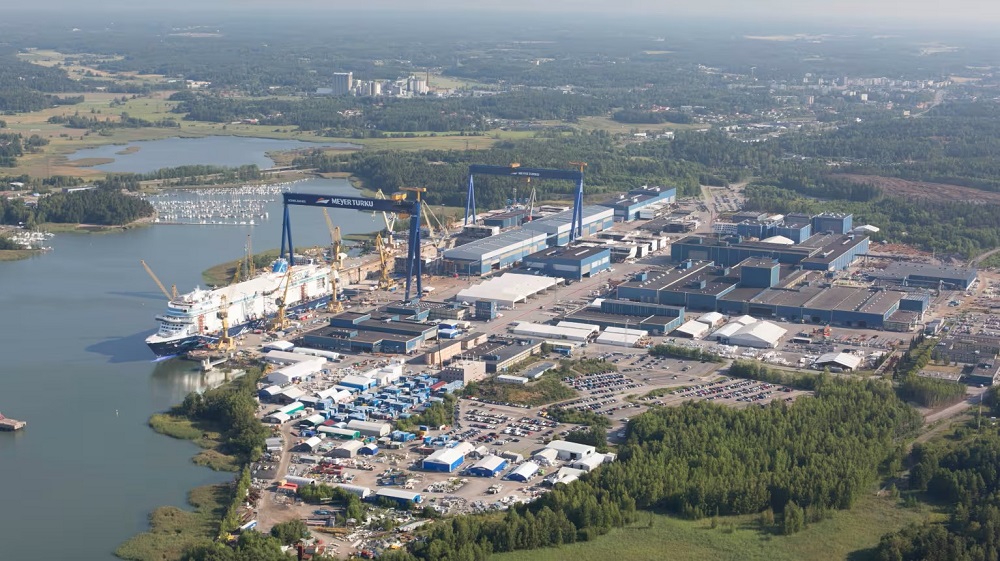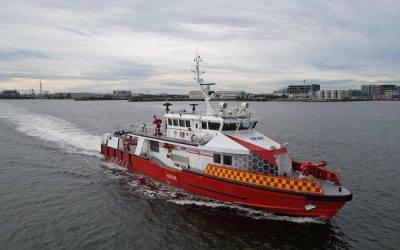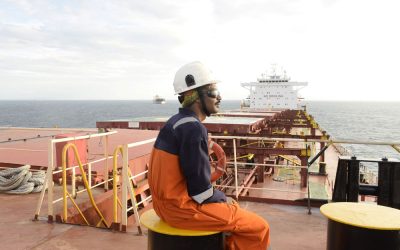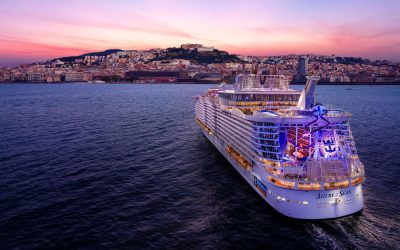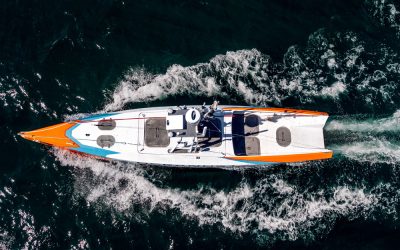While the outlook looks good attracting a new workforce will be key, writes Kari Reinikainen
The Finnish shipbuilding industry and its wider maritime cluster have a strong track record for innovation and in order to remain in business, they need to remain ahead of the curve in the face of competition from the Far East. Access to people with the right skills is crucial for the sector to retain its position and this it cannot do by domestic means alone.
The first diesel electric icebreaker, Sisu (not the present vessel of the same name), was built in Finland in 1939, following two naval vessels completed earlier in the same decade with the same type of power plant.
In 1967, the overnight ferry Finlandia entered service. It was powered by four medium speed diesels and this soon became a favoured option on many passenger ships for decades to come. Royal Princess of 1984 revolutionised the layout of cruise ships, again setting a trend. Azipod, the first podded electric propulsor, emerged from Finland early in the following decade.
Impressive as the past is, the outlook for the Finnish shipbuilding industry and the wider maritime cluster remains surprisingly good, although some challenges remain on the horizon, says Pentti Kujala, Professor Emeritus of Marine Technology at the Aalto University in Helsinki and Full Tenured Professor in Taltech, Estonian Maritime Academy in Tallinn.
“(Meyer) Turku has work for two years ahead and it is possible that there will be further orders for Icon class cruise ships,” he tells The Naval Architect. Royal Caribbean Group that has two further 248,600gt units of the Icon class on order and which in January took delivery of Icon of the Seas, the first ship of the type, is gathering experience from the new ship, Kujala notes.
The new ship has been a success, according to Michael Bayley, president and chief executive officer of Royal Caribbean International, the group’s contemporary market unit. “We’ve never seen such incredible demand reaction and pricing power that we’ve seen with a new product that we’ve introduced. It’s really been phenomenally successful,” he stated in the final quarter 2023 conference call in early February.
The Helsinki Shipyard now has a new owner, Davie Shipbuilding Group of Canada, which has stated that the acquisition of the Finnish yard creates a leading builder of ice-breaking tonnage. Kujala says that the shipyard is negotiating at the moment with a number of customers for new ship projects consisting of e.g. icebreakers and cruise ships.
The third shipyard in the country, Rauma Marine Constructions (RMC), has a large ro-pax ferry for TT Line in Australia nearing completion and a second one under construction. It also has an order for four 4,000tonne displacement corvettes for the Finnish Navy. “The market for ferries is a tough one, because of competition from shipyards from Far East,” Kujala notes.
RMC has operated as an “assembly yard”, with a light organisation of its own and significant reliance on contractors and suppliers. Several of its ferry projects have been delivered late and over budget, which Kujala says was due to Covid-related challenges and insufficient project management resources at RMC. Ironing out these problems could help the yard to defend its position as a builder of ferries.
Workforce needs to update skills
In addition to its own shipbuilding, the Finnish maritime cluster includes a range of businesses that range from ship design to the supply of various other services and many kinds of equipment. As these are mainly well established and have links with customers all around the world, they are not entirely dependent on the domestic yards. They are, all in all, enjoying a strong business environment.
However, keeping all three yards in business is very important for the maritime cluster of the country because it provides a critical mass of demand that can sustain the cluster. Like many industrialised countries, Finland’s population is ageing and recruitment is a challenge that the cluster is aware of and which needs attention, Kujala states, adding: “We need people with the right skills and there are challenges in attracting them to shipbuilding.”
The industry has launched a campaign at schools, targeting 16- to 18-year-olds, with a message that the maritime sector offers exciting career prospects in an international environment, Kujala points out. However, it is obvious that the cluster will need workforce from abroad as well.
In his Pro gradu -work (master’s thesis) that was approved at the Turku University of Applied Sciences in 2022, Lassi Kokkala said that due to the continued advances in technology and automation, it would become increasingly important to focus vocational training in narrowly targeted specialist areas, both in shipbuilding and the wider maritime cluster. “The results of training, however, are transferred to productive work after a time lag and the training itself only lays the foundation for skills that should continuously be refined and developed further at work,” he wrote.
Referring to other studies made in the sector, Kokkala said that abilities to innovate and to solve problems are essential in the maritime sector, but that in reality some universities of applied sciences place far more weight on these matters than others. Also, digitalisation would play a growing role in the maritime cluster and therefore, open platforms for innovation should be set up to accelerate its use in the cluster, Kokkala stated.
Rapid development of technology has led to a situation in which many people of working age fall behind these advances and the need to address this through training has been recognised by the government.
Competition for people
Meanwhile, the Finnish Economic Policy Council said in a report published in January 2024 that since 2015 Finland’s population has grown only thanks to net immigration.
“With an ageing population and a lower birth rate, Finland will continue to need immigrants in the coming years. However, given the global competition for international labour and talent, it is not self-evident that they will end up in Finland. Some of the changes (in legislation) envisaged by the government, such as stricter requirements for citizenship, may make Finland less attractive in the international labour market,” the council concluded.
The country in general and the maritime cluster in particular have a few strong cards in their sleeve, however. Work-life balance is generally deemed to be good in Finland and the key four regions where the maritime cluster has its strongest footprint – the capital Helsinki and the cities of Turku, Rauma and Vaasa, all on the west coast, all have lots of green spaces and easy access to nature, including the archipelagoes outside them.
In its strategy for the years 2017-25, the Finnish marine cluster that employs some 40,000 people and has an annual turnover in the region of €6.0 billion, set a vision that by the end of next year Finland “would have the most creative, agile and adaptive maritime network known from innovation of customised solutions, services and forms of operation delivered in flexible schedule and with competitive price.”
It highlights the need for multidisciplinary research with both domestic and foreign organisations and the integration of the latest technology into maritime applications. Energy, environmental and sustainability technologies, smart ships and systems plus competence services are in the spotlight of the work.
The Finnish maritime cluster has been ahead of the curve in environmental matters. In early 2013, Meyer Turku delivered the 57,655gt cruise ferry Viking Grace to the Finnish cruise ferry owner Viking Line: it was one of the first large LNG-powered passenger vessels built anywhere.
In December 2023, Mein Schiff 7, a methanol-ready cruise ship for TUI Cruises in Hamburg, was launched and two months later, the ferry company Viking Line together with the ports of Turku in Finland and Stockholm in Sweden signed a memorandum of understanding to create a green corridor that would make the 10-hour crossing carbon free by 2035.
Ageing population challenge
This builds partly on experience gained at a Decatrip project, which included Viking Line together with industrial and university partners. This again has a business model that brings the ferry company, freight customers and green energy suppliers together on a long-term commitment basis as its foundation, which also means that the template can be used elsewhere, too.
At the time of writing, several trade unions staged strikes against planned labour market and social security reforms of the right of the centre government of Prime Minister Peter Orpo. These, the government says, are necessary as the population is getting older and the share of the working age population of the total is decreasing.
The future outlook for the Finnish maritime cluster will, at least to a certain degree depend on how the country can address the challenges it is facing on the macroeconomic level. While the country is by no means alone with the problems of an ageing population, a lot will depend on its ability to address them.
